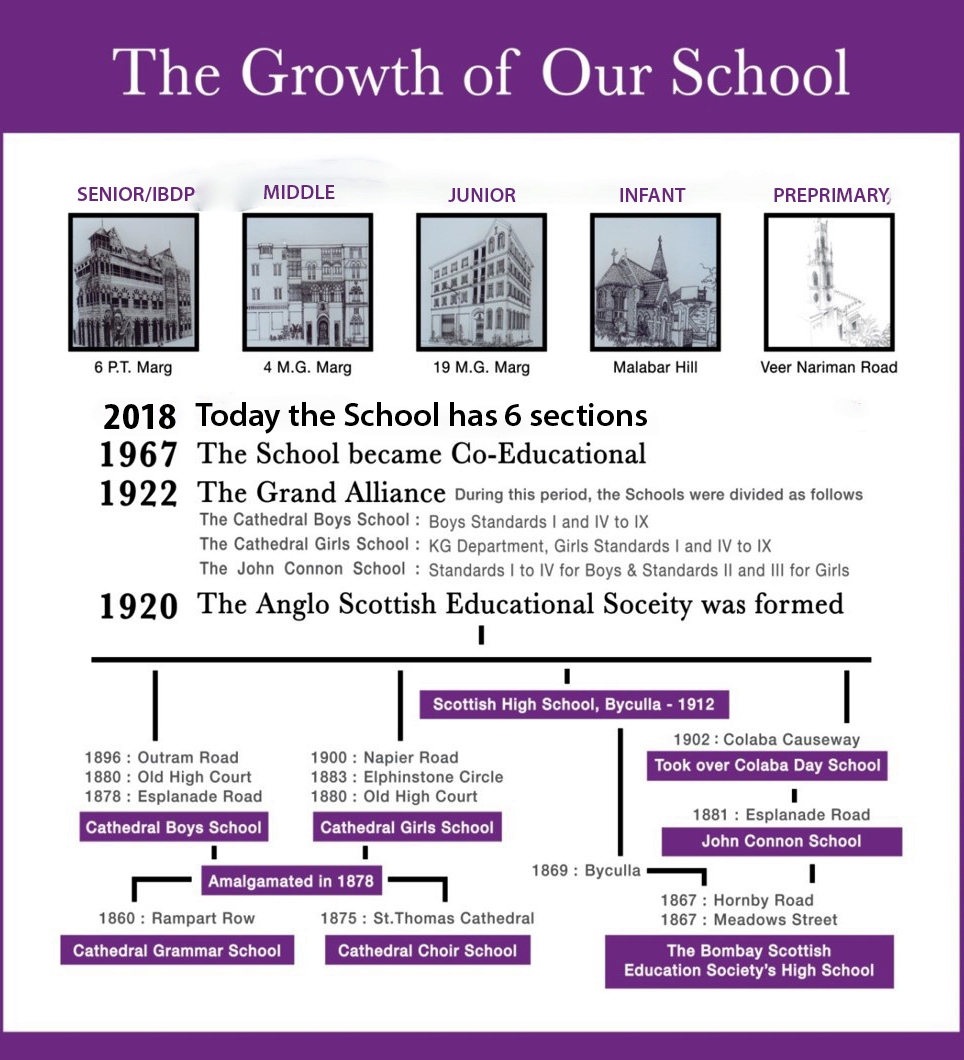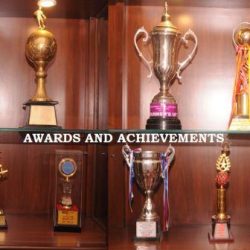History & Heritage
It was in the year 1860 that Bishop Harding and the Cathedral Chaplain decided to open a Grammar School within the walled city of Bombay. This small establishment together with an even smaller school for girls, were to be the first of many strands which were eventually joined together to form the Cathedral School as we know it today. On October 1st 1875, a Choir School was established with the primary objective of providing choristers for St. Thomas’ Cathedral. In the meantime, in 1866, The Bombay Scottish Education Society had been founded. In 1881 the society put up a beautiful building on the Esplanade naming it after Mr. John Connon, a well-known philanthropist and Chief Registrar of Bombay. In 1902 the Society took over the small school conducted by the Wesleyan Church in Colaba Causeway. This virtually became the kindergarten department of the John Connon School till it was closed in 1920, when the accommodation became unsuitable.
The Bombay Diocesan Society had opened a High School in Byculla in 1878. This school was amalgamated with the Choir School under the name of the Cathedral High School. Rs 50,000 was collected by grants and public subscriptions and the Government Paper purchased with this sum forms the major portion of the present endowment settled by Trust Deed on the Cathedral High School. The present Senior School building, a happy blend of Gothic and Indian Architecture, was erected and occupied in 1896.
In 1880, the Girls’ School was started under the supervision of Mrs. Evans, wife of the headmaster of the Boys’ School. It was housed in the Old High Court.
As the number of European families increased and the residential areas they occupied became more widespread, many small schools, each linked to a particular branch of the Christian Church sprang up. Finally, in 1922, at a public meeting held at the Town Hall the Principal of the Cathedral Boys’ School suggested that
The Cathedral Schools and the Scottish School should join forces instead of competing against each other. The idea was applauded enthusiastically and so the Anglo-Scottish Education Society was conceived. The re-organisation of the school was effected, with Col. Hammond as the Principal.

In the 60s co-education was still viewed with trepidation and when in 1965, the Principal. Rev. Ridding, stated that the only way to solve the financial and organisational problems of the school was to make it co-education, some people felt so strongly about it that they went to Court to stop the school from proceeding with these plans. Justice Lentin, a name which was to become synonymous with courageous judgments two decades later, weighed the legal points carefully and pronounced that the school had every right to introduce co-education if it so wished. The ‘merger’ surprisingly was processed smoothly.
Today the old boy’s school is the Senior School with Classes 8 to 12 with 4 sections in each except the two highest; the old Girl’s school is the Middle School with classes 5 to 7; the John Connon School is now the Junior School where we have pupils in Classes 2, 3 and 4, and the Malabar Hill School has Lower 1, and Upper 1.
In the words of Mr. Gunnery, one of our eminent principals, “the School is a place where everything that goes on bears the stamp of the Cathedral School character and tradition. Our education is international. We are an Indian school where foreigners are at home. A Christian school which children of any faith can call their own." “Indeed the School’s objective is all round character formation and the development of proper attitudes. Consciously and unconsciously pupils absorb a great deal apart from subjects they study and in the great examinations of Life, it is these extra assimilations which speak a schools worth."
Awards and Achievements
School’s Achievements
 The Awards & Achievements received by our school has not only enriched the…
The Awards & Achievements received by our school has not only enriched the…
Sports Achievers
 Apart from academics, we also encourage, promote and engage our learner in sports…
Apart from academics, we also encourage, promote and engage our learner in sports…

